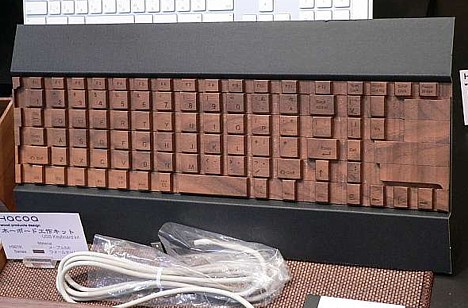Japanese automakers have released the details of the concept cars to be unveiled at the upcoming 2007 Tokyo Motor Show (October 26 to November 11). Here is a roundup of some of the more fantastic designs.
* * * * *
- Toyota RiN

(Toyota RiN)
Designed to promote harmony with nature and evoke a warm, fuzzy feeling inside, the eco-friendly Toyota RiN concept car features heated ergonomic seats, an oxygen level regulator, a spot humidifier, a "mood training" steering control system that monitors the driver's psychological state, and greenish glass that protects against UV and infrared light while enhancing the natural beauty of the view outside. The exterior design was inspired by Japan's old-growth Cryptomeria trees known as yakusugi, which are found on Yakushima island, a natural World Heritage Site known for its pristine, ancient forests.
* * * * *
- Toyota Hi-CT
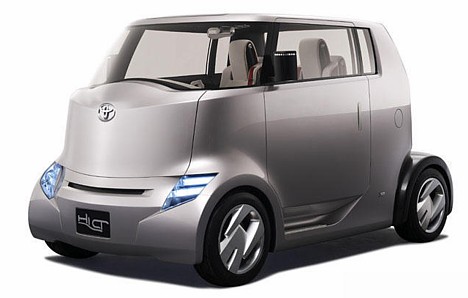
(Toyota Hi-CT)
The Toyota Hi-CT, billed as a cool and fun next-generation urban assault vehicle, is built specifically for narrow city streets and features a hybrid engine you charge by plugging into a wall outlet. Batteries are stored under the floor for a more compact, upright design, and interior 100V AC outlets provide passengers a convenient way to power their portable electronic devices. The rear deck is big enough to haul bicycles and surfboards, or it can be outfitted with a detachable luggage trunk.
* * * * *
- Mazda Taiki
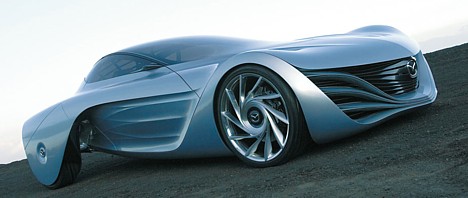
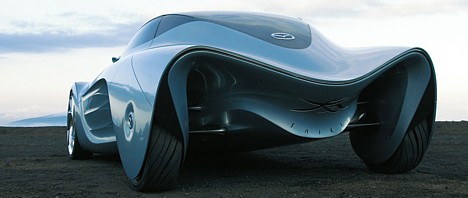
(Mazda Taiki)
The hyper-aerodynamic Mazda Taiki is the fourth vehicle in Mazda's Nagare series of cars based on the concept of "flow." Inspired by Japanese koinobori (decorative carp-shaped streamers), Taiki's design is meant to visually express the flow of air (incidentally, taiki means "atmosphere" in Japanese). With outstanding environmental and driving performance, Taiki's next-generation rotary engine and front-engine rear-drive layout may well figure into Mazda's future sports cars designed to help achieve a more sustainable society.
* * * * *
- Honda PUYO
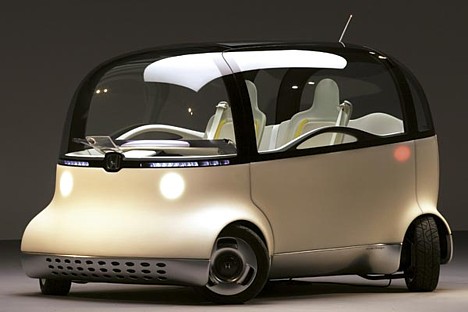
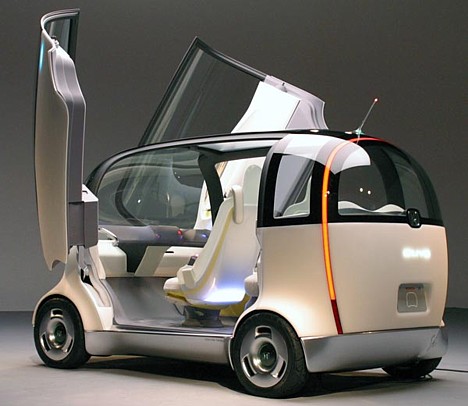
(Honda PUYO)
The eco-friendly design of the Honda PUYO fuel-cell vehicle is meant to create a soft, friendly impression and entertain the occupants as well as the people around it. The "seamless soft box" design gives PUYO a spacious interior and the charm of a cute pet that begs to be touched. PUYO's "gel body" made from soft materials is designed to enhance safety, while embedded headlights and other illumination shine through the soft, translucent skin in the hope of fostering a more tender relationship between human and machine.
* * * * *
- Nissan Pivo 2
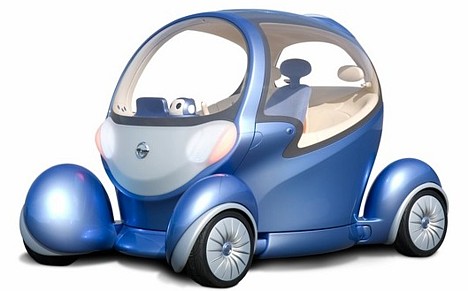
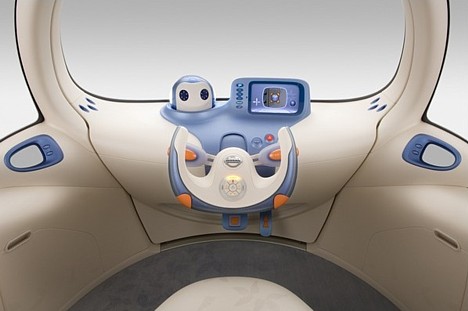
(Nissan Pivo 2)
Like Nissan's original Pivo, the electric-powered Pivo 2's four individually-powered wheel units turn 90 degrees to move the car in any direction, while the 360-degree rotating cabin allows the driver to face forward at all times. Pivo 2's most notable upgrade is the dashboard-mounted NEC Papero robotic agent who can carry on conversations and read facial expressions to monitor the driver's condition. In addition to assisting with basic vehicle functions, Papero can help navigate streets and look for parking spaces, suggest where to stop for coffee if the driver looks sleepy, and lighten the mood by nodding and acting happy. (Watch video of Pivo 2.)
* * * * *
- Daihatsu Mud Master-C

(Daihatsu Mud Master-C)
Daihatsu worked with mountain bike star Raita Suzuki to design the Mud Master-C, a compact and lightweight transporter ideally suited for MTB support duty. The Mud Master-C features a tough body-on-frame construction, an innovative hub reduction system and 16-inch off-road tires that provide more than 37 cm (14.5 inches) of ground clearance, allowing it to venture deep into mountain bike territory. Three giant gull-wing doors make it a snap to load and unload cargo.
* * * * *
- Mitsubishi i MIEV Sport
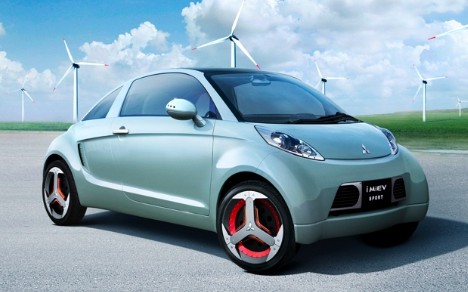
(Mitsubishi i MIEV Sport)
A pair of in-wheel motors drive the front two wheels of the eco-friendly Mitsubishi i MIEV Sport electric minicar, while another motor drives the rear wheels. The i MIEV Sport has a range of 200 kilometers (120 miles) and is powered by lithium ion batteries, with extra juice provided by auxiliary solar cells mounted on the roof, a generating fan mounted in the front grille, and a regenerative braking system that recovers energy as the car slows down. Further efficiency is achieved with power-saving LEDs and heat-absorbing window glass, and the interior features lots of bioplastic components.
* * * * *
- Suzuki X-HEAD

(Suzuki X-HEAD)
The versatile Suzuki X-HEAD crossover utility vehicle is built for off-road adventure and city cruising, and can be outfitted with a variety of load-bed units suitable for different situations. The "Camper" unit can be attached to provide sleeping space for two adults, the "Fashion" unit allows for stylish urban mobility, and the "Rescue" unit is ideal for emergency rescue operations in extreme environments.
* * * * *
- Suzuki Sustainable Mobility (PIXY + SSC)
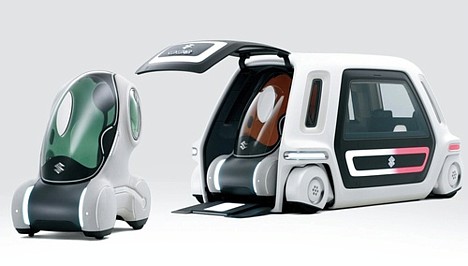
(Suzuki Sustainable Mobility (PIXY + SSC))
Suzuki's Sustainable Mobility concept vehicle consists of two units -- a low-speed personal transport pod called the "PIXY" and a minicar-based mobility unit called the "Suzuki Sharing Coach" (SSC). Ideal for short trips around town, the PIXY is designed to transport individuals along sidewalks and into buildings. The PIXY fits inside the SSC for longer trips, and a shared control system allows the driver to operate the SSC from inside the PIXY. The PIXY can also be coupled with a sports car unit called the SSF and a boat unit called the SSJ.
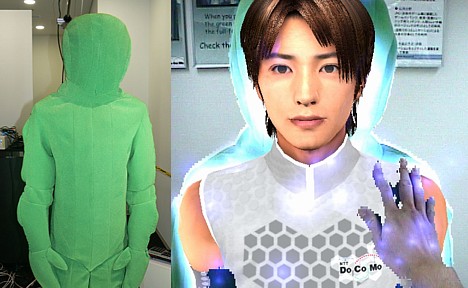


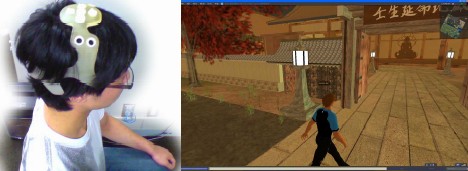












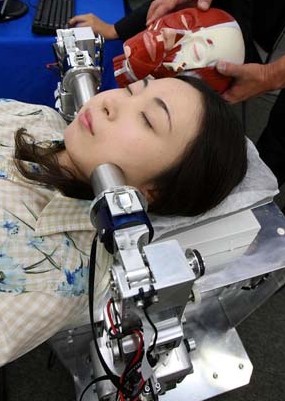 On October 9, professors
On October 9, professors  Mayu Yamamoto, a former researcher at the International Medical Center of Japan, has won this year's Ig Nobel Chemistry Prize for developing a method for extracting vanillin -- an ingredient in vanilla fragrance and flavoring -- from cow dung.
Mayu Yamamoto, a former researcher at the International Medical Center of Japan, has won this year's Ig Nobel Chemistry Prize for developing a method for extracting vanillin -- an ingredient in vanilla fragrance and flavoring -- from cow dung.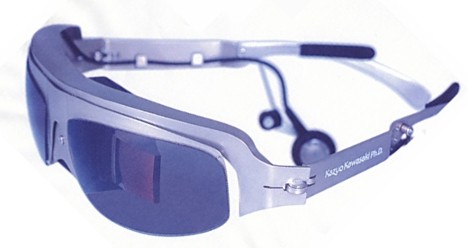
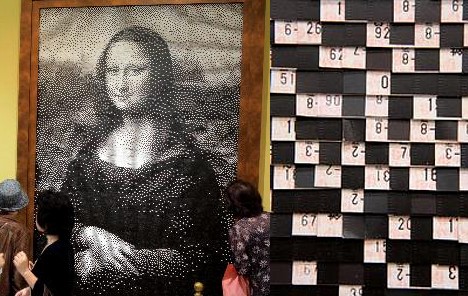
 A vending machine at Tokyo's Akihabara station is now offering a limited run of canned bishoujo bread in celebration of the new Clannad
A vending machine at Tokyo's Akihabara station is now offering a limited run of canned bishoujo bread in celebration of the new Clannad 